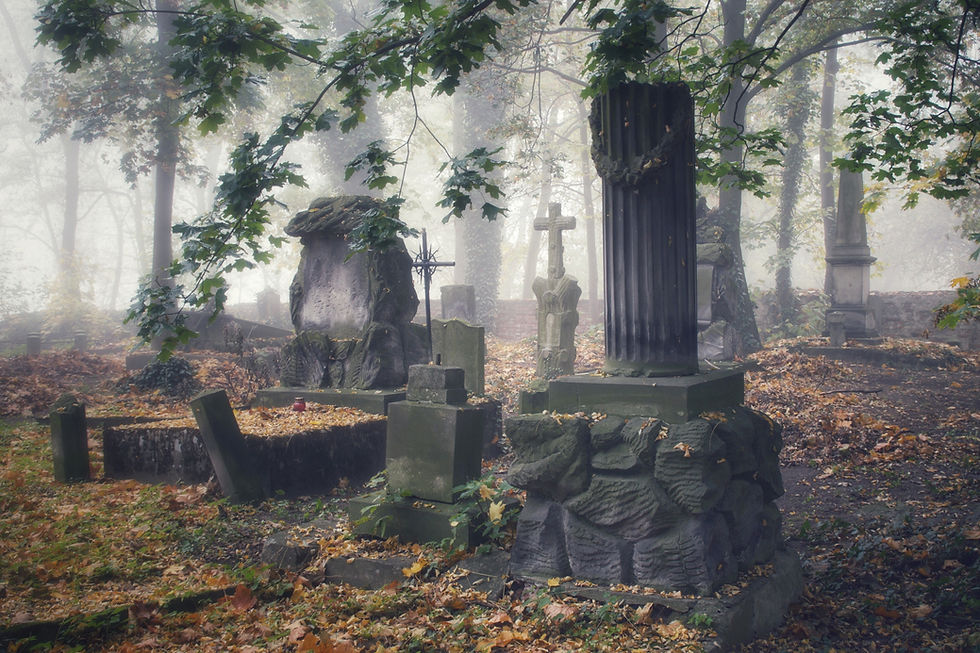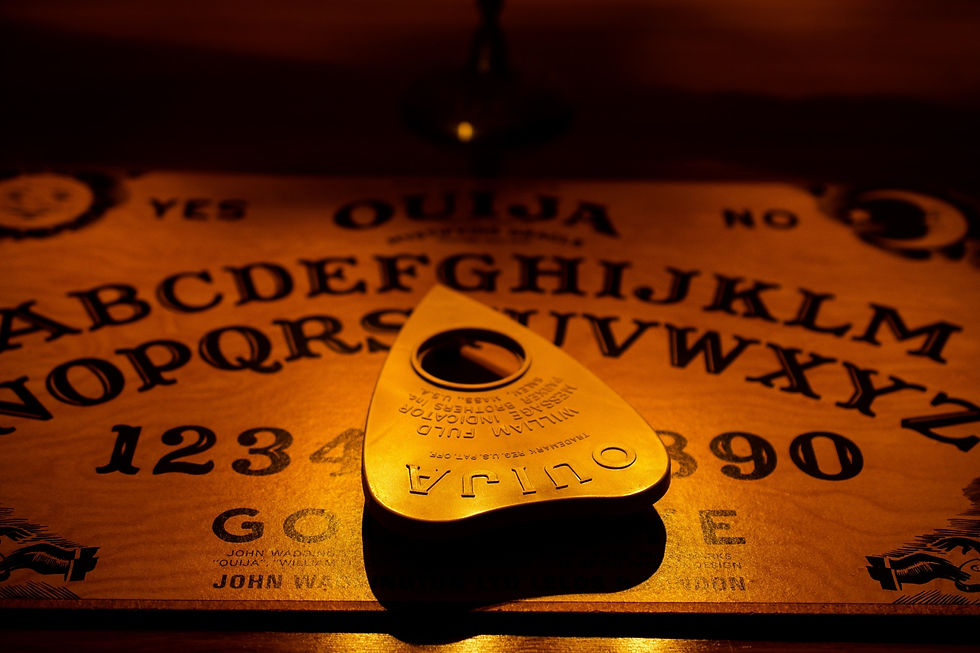The Season of Death
- Nicole Klein

- Oct 10
- 5 min read
That sounds terribly ominous and a bit dramatic, doesn’t it.
But as we, in the northern Hemisphere, are hurtling towards Halloween or Samhain (pronounced Sowin), the Celtic name the Pagan community often uses, while the world around us is slowly shutting down, maybe that’s exactly what it is?
Autumn, with its fading warmth and falling leaves, has long been understood as a season of transition, when life turns inward and the earth prepares for its winter sleep. For a lot of Pagans autumn culminates in Samhain, the festival that honours the dead and marks the moment when the boundaries between the worlds are said to grow thin. During this time of increasingly darker days, death is accepted as an essential part of life.
Just look out of your window, if you are in the northern hemisphere. Autumn’s slow transformation is happening all around us. Natures colours are changing from fresh, vibrant greens to warm, golden yellows and reds. Squirrels are running around gathering acorns and nuts, while the last fruits ripen and fall and most fields are now empty after the harvest.
There is no doubt that this descent into stillness is not a tragedy but a necessary stage in the turning of the wheel of year.

Everything is shifting focus from being actively growing to conserving energies.
Trees are letting go of their leaves, plants are withdrawing energy into their roots, animals are retreating to their dens and burrows.
Nature is dying, everything is coming to an end.
For anyone who tunes into the seasonal rhythm, autumn is a time to reflect on the cycles of our own lives, turn inwards and slow down.
Death, in this context, is not merely an ending but a time of change, a return to source and a preparation for rebirth.
Pagan believes do not glorify death or deny grief, but they acknowledge the necessity for death to occur so that new life can happen. The fallen leaves become compost for spring’s growth; the husks of the harvested grain feed the soil.Nothing is wasted in nature, especially not in death.
So maybe even human death can be seen as a form of re-birth into whatever comes next.
I have often wondered why the topic of death is considered to be such a taboo and a frightening topic for most people, when in reality death is an absolute certainty of life.
We will all die, we will all experience the death of people who we love dearly and a lot of us have gone through the grief of a beloved pet dying at least; yet talking about it is often considered something we mustn’t do.
Almost as if you are tempting death to come your way, simply by talking about it.
I guess it is a fear of the unknown, because we simply cannot say what happens next with any absolute certainty. Obviously every religion or spirituality has their own idea of the after life, but they all agree that there is one!

Samhain, celebrated on the night of October 31st into November 1st, is one of the four great Celtic fire festivals, along with Imbolc, Beltane, and Lughnasadh. In the old Gaelic calendar, Samhain marked the end of the harvest season and the beginning of winter. Livestock were brought in from the summer pastures, feasts were held and bonfires were lit for protection and cleansing. It was believed that the spirits of the dead came to visit you on these nights.
Samhain is often also described as the “Witches’ New Year”, not just as a modern idea, but probably because it carries the energy of thresholds.
In Celtic tradition, Samhain was liminal; the old year was dying, the new not yet born and in such in-between times, the usual barriers between the worlds of the living and the dead were believed to grow thin, allowing spirits to pass more freely.
And I guess there is the question that spooks a lot of people:Are the spirits actually there? Are they present? Are they listening?I think that’s possible, but why would that frighten us? When you speak to your deceased mum in your head, do you think she can hear you? Does it not feel good to talk to her or anyone else you still miss?
As usual the Hollywood horror factory has a lot to answer for.

As we get closer to Halloween or Samhain you might hear or read the words “the veil is thinning”.The idea comes from a spiritual perception that during certain times or seasons, the boundaries between the physical and the spiritual, the living and the dead, become more permeable. The people that celebrate it experience Samhain as such a time, when intuition deepens, dreams become vivid, and the presence of spirits feels nearer.
Maybe it is as simple as feeling the influence of the darker half of the year, as the nights grow long and the earth grows still, it just invites us to turn inward and remember those no longer with us.
I consider the thinning of the veil less a literal breach between worlds and more a shift in consciousness and perception.
I feel that as the outer world darkens and quiets, we are becoming more receptive to subtle impressions, memories, and the wisdom of the ancestors and maybe a message or two from the beyond.

To honour and connect with the memory (or the spirits) of our deceased can maybe even help to release the fear that can have such a hold over the living.
Of course we should also use this time to mourn our losses, acknowledge the pain that grief causes, but maybe also trust in the ongoing processes of renewal.
Samhain is definitely not a festival of fear but one of remembrance and communion.
We set places at the table for our ancestors (dumb suppers), light candles in their honour, and tell their stories.
We recognise that we too are part of this great lineage of life and death, inheriting not only DNA and history, but also wisdom and unfinished dreams.
Death, autumn, Samhain, and the thinning of the veil together should all serve as a reminder that life is cyclical, that endings and beginnings are intertwined, that the living and the dead belong to the same great family.
We too are part of a vast and ongoing story. In that recognition lies both humility and hope. The veil thins not only between the living and the dead but between our small selves and the great mystery of the universe.
With that said, I have an invitation for you to embrace a bit of that spiritual mystery this year.
In this threshold season I believe we sit between the known and unknown. Try to be still and listen….
Listen to all the reminders that the world is not just what we see in broad daylight, that nothing and everything is forever, that as long as you remember those that came before, they are still with you.
With that in mind I would like to share with you a tradition I have of reading out the ‘Prayer for the forgotten dead’ every year, usually with others joining in and reading parts of it. I find it profoundly moving, quite emotional and an important thing to do.
So I leave you with link to that prayer and maybe you can read it out on Samhain too.
Blessings to you all

You can subscibe to the blog by clicking here
Or scroll down further to comment xx
It's a lovely prayer... Did you know that November in Gaelic is Samhain? I used to get Gaelic Hebridean Calendars every year.
I've no idea why people find graveyards spooky or scary - after all, many people they knew well and liked or loved are probably in there. Your graveyard photo is really gorgeous and just says 'peace' to me.